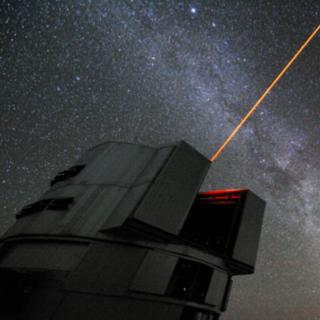Bibcode
López Sánchez, Ángel R.; Read, Justin I.; Noël, Noelia E. D.; Conn, Blair C.; Carrera, R.
Referencia bibliográfica
Monthly Notices of the Royal Astronomical Society, Volume 471, Issue 4, p.4571-4578
Fecha de publicación:
11
2017
Número de citas
38
Número de citas referidas
37
Descripción
The Magellanic Bridge (MB) is a gaseous stream that links the Large
(LMC) and Small (SMC) Magellanic Clouds. Current simulations suggest
that the MB forms from a recent interaction between the Clouds. In this
scenario, the MB should also have an associated stellar bridge formed by
stars tidally stripped from the SMC by the LMC. There are several
observational evidences for these stripped stars, from the presence of
intermediate age populations in the MB and carbon stars, to the recent
observation of an over-density of RR Lyrae stars offset from the MB.
However, spectroscopic confirmation of stripped stars in the MB remains
lacking. In this paper, we use medium resolution spectra to derive the
radial velocities and metallicities of stars in two fields along the MB.
We show from both their chemistry and kinematics that the bulk of these
stars must have been tidally stripped from the SMC. This is the first
spectroscopic evidence for a dwarf galaxy being tidally stripped by a
larger dwarf.
Proyectos relacionados

Evolución Galáctica en el Grupo Local
La formación y evolución de galaxias es un problema fundamental en Astrofísica. Su estudio requiere “viajar atrás en el tiempo”, para lo cual hay dos enfoques complementarios. El mas extendido consiste en analizar las propiedades de las galaxias a diferentes distancias cosmológicas. Nuestro equipo se concentra en el otro enfoque, denominado
Emma
Fernández Alvar